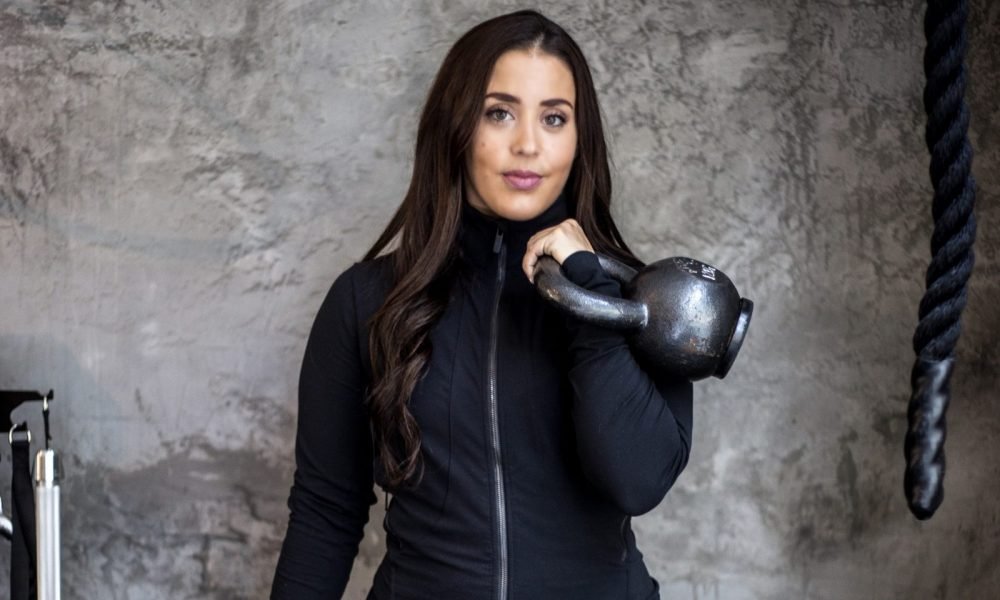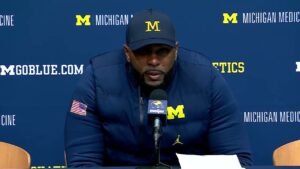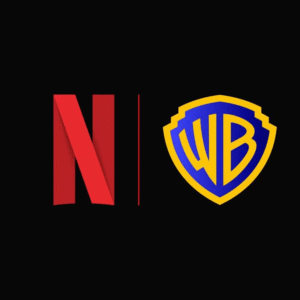Dr. Mariel Schofield on Building a Performance-Driven PT Brand in California, Life as a D1 Athlete, and Bridging Rehab With Elite Training

Courtesy of Dr. Mariel Schofield
Dr. Mariel Schofield, formerly a Division I athlete and now a physical therapist, is making a significant impact in the performance and rehabilitation fields in California.
After earning her Doctorate in Physical Therapy from the University of Miami, where she also played collegiate volleyball, Dr. Schofield decided to move her talents west, welcoming a fresh challenge in Los Angeles.
Passionate about bridging the gap between injury recovery and peak athletic performance, she is now working with elite professionals at cutting-edge facilities like VERT Sports Rehab and the soon-to-open Monarch Athletic Club in West Hollywood.
In this exclusive interview with LandonBuford.com, Dr. Schofield discusses her journey, the lessons she learned as a student-athlete living with Type 1 diabetes, and her plan to create a wellness brand that truly integrates.
Why did you decide to practice in California compared to South Beach?
I grew up in Monrovia, Maryland, and started playing volleyball competitively at the age of 11. I then attended the University of Miami, where I could play volleyball and study in their great physical therapy school. Upon graduating from the University of Miami with my doctorate in Physical Therapy, I had been in Miami for seven years and felt I wanted a change of scenery. I was offered an incredible opportunity here in Los Angeles to work at a performance facility. I love the rehab and recovery aspects of physical therapy, but I would love to bridge the gap between rehabilitation and recovery to help athletes optimize their performance. They are not just recovering from an injury, and they are becoming the best athletes they can be.
Do you have any aspirations to open your own clinic one day?
Yes! Currently, I treat at a few locations, one of which is VERT Sports Rehab and Fitness, a sports and orthopedic physical therapy clinic in Santa Monica. What I’m excited about is a facility called The Monarch Athletic Club coming soon to West Hollywood. This is a truly unique experience, as we have an incredible team of performance and medical professionals, which includes me, a physician, five to six strength and conditioning coaches or trainers, yoga and Pilates instructors, and nutritionists. We all work in one facility.
It’s a unique setup that we have; it allows each client to have quarterly meetings with specialized medical professionals and a performance staff, all under one roof. We can systematically track their performance and outcomes over time. It has always been a passion of mine to work with a multidisciplinary client that has a wealth of resources under one roof.
How do you plan on expanding your brand through social media?
I plan on posting more images and videos of my workout routines and training regimens. My goal is to build my brand by providing the public with well-developed content.
How old were you when you knew that volleyball was a passion of yours?
I was involved in multiple sports, including volleyball, soccer, and lacrosse, when I was younger. I specialized in volleyball around the age of 16. I grew up with two brothers who were also very athletic, which helped develop me into the athlete I am today. My parents also exposed me to multiple sports at a young age. A lot of research nowadays states that the earlier you specialize as a youth athlete, the faster you’ll burn out and the fewer movement variables you have. So, the best athletes are multiple-sport athletes during their youth, and they can adapt to their surroundings. At the age of 17, I decided to attend the University of Miami and played volleyball as an undergrad.
What was the most challenging transition for you going from being a high school athlete to a collegiate athlete?
The most challenging transition for me is that I am a Type 1 Diabetic, and I have been dealing with this since I was five years old. I had always managed it well throughout high school, but once I entered college, there were additional stressors from school, social life, and training. My schedule consisted of attending classes, training for four to six hours after school, and traveling on weekends. That transition and having to adapt to that type of schedule and manage my diabetes was the hardest thing for me. That was the most formidable challenge I faced: transitioning from high school to college. You’re on your own, and your parents aren’t watching your every move, but you do have extra responsibilities to manage.
How were you able to stay motivated at the University of Miami as a student-athlete pursuing your undergrad degree?
Discipline and surrounding yourself with individuals who will support you and bring the best out of you. I was fortunate to have a great coach, teammates, and resources that we as athletes need to succeed. I would attribute this to the reason why we were a highly ranked team.
Being that you are a graduate of the University of Miami how has it helped to mold you into the person you are today?
The experience of being able to interact with so many different people who were motivated and passionate. This really inspired me and helped point me in the right direction, along with the coaching staff, who taught me many life lessons as a student-athlete. I also had the opportunity to work with elite athletes pursuing their dreams, and many of them went on to become professional athletes. They also became leaders in their chosen industry. Just being surrounded by that body of passion, knowledge, and discipline is life-changing. That, and my personal experience with health, has molded me into the person I am today.
What is a good calorie intake for young athletes?
It depends on the sport’s rigorous demands and the athlete’s age. I am not a registered dietitian, but when I’m asked about nutrition, I tell people to eat whole, earth-grown foods in their most natural state. So, eliminate processed food and added sugar; it depends on the athlete’s energy demands.
What artists do you listen to during daily workouts?
Drake, Migos, Future, and Rick Ross
How much sleep should an athlete get daily?
8 hours of sleep. Consistently getting less than 8 hours of sleep decreases cognitive performance, memory, and heart rate variability, and increases sympathetic nervous system activity. This leads to a decrease in function, health, and performance, and you are unable to recover correctly.
Who did you consider your role models growing up?
Growing up, I considered my gym teacher, Bonny Goldberg, and her husband, Barry Goldberg, who is the head volleyball coach at American University. I would also say my club coach, Silvia Johnson, who is now the director of the Metro Volleyball Club of DC.
Are there any individuals you see as your mentors at this point in your life?
I had a great experience with one of my clinical affiliations at Rehab 2 Perform in Frederick, Maryland. My clinical instructors were Dr. Josh Funk, Dr. Zach Baker, and Dr. Jarred Boyd. They understand the human body and their roles as physical therapists, including injury rehabilitation and performance enhancement. They have been influential throughout the whole physical therapy process.
What is the best advice you would give to an aspiring personal trainer looking to obtain their certifications?
Never stop learning and being a student, and always stay up to date with current research. Ask questions and never assume that something is correct just because you see it on Instagram.







